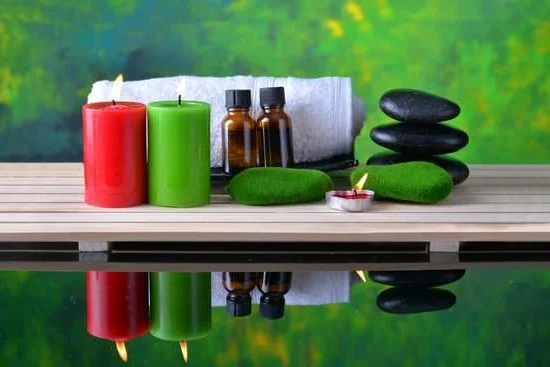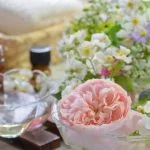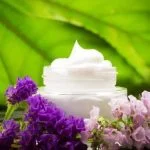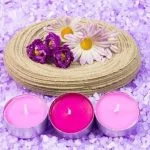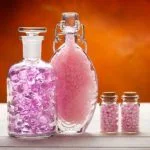Aromatherapy, the therapeutic use of essential oils and plant extracts, has been around for centuries, offering a holistic approach to enhancing physical, mental, and emotional well-being. In this article, we delve into the intriguing origins of aromatherapy and its enduring influence on human health and wellness. From ancient civilizations to the modern world, we journey through time to uncover the roots, pioneers, resurgences, and cultural practices that have shaped aromatherapy into what it is today.
The history of aromatherapy can be traced back to the beginnings of human civilization. Ancient cultures such as the Egyptians, Greeks, Romans, Chinese, and Indians recognized the power of aromatic compounds found in plants and utilized them for healing purposes. Whether it was through burning incense for religious ceremonies or using botanical essences in medicinal preparations, these early civilizations laid the foundation for the development of aromatherapy as a natural healing modality.
As we explore further, we will examine the contributions of early pioneers who devoted their lives to unraveling the secrets of essential oils and their therapeutic properties. From Avicenna in medieval times to René-Maurice Gattefossé in the 20th century, these individuals played a crucial role in advancing our understanding of aromatherapy’s benefits and applications.
In addition to discussing historical developments, we will also shed light on contemporary practices and cultural traditions where aromatherapy continues to thrive. By examining scientific research studies that validate its effectiveness as well as addressing common misconceptions about its origins, this article aims to provide a comprehensive overview of aromatherapy’s evolution from ancient times to present-day.
Through exploring this rich history and investigating current trends surrounding aromatherapy worldwide, we aim to enlighten readers on how this timeless practice has stood the test of time and continues to enhance well-being in various ways. The following sections will dive deeper into specific aspects of aromatherapy’s past and present, offering a comprehensive exploration that will leave readers with a deeper appreciation for the timelessness of this remarkable healing modality.
Ancient Beginnings
Scented Oils and Herbal Remedies in Ancient Egypt
One of the earliest known civilizations to have practiced aromatherapy is Ancient Egypt. The Egyptians revered fragrant plants and their essential oils for their healing properties, as well as for religious and cosmetic purposes. They believed that certain scents had the power to connect with divine beings and promote a harmonious balance between the physical and spiritual realms. The use of aromatic substances in rituals, embalming practices, and daily life was prevalent in Egyptian society.
Ayurveda and Herbal Medicine in Ancient India
Ancient India also has a rich history of using aromatherapy in traditional medicinal practices. Ayurveda, an ancient Indian system of medicine, recognizes the therapeutic benefits of aromatic herbs, spices, and oils. In Ayurvedic texts such as the Charaka Samhita and the Sushruta Samhita, specific mention is made of various herbal remedies that utilize essential oils derived from plants like basil, sandalwood, cinnamon, and lavender. These oils were used not only for their fragrance but also for their pharmacological properties.
Herbal Knowledge in Traditional Chinese Medicine
In traditional Chinese medicine (TCM), aroma plays a significant role in promoting health and balance within the body. Aromatherapy techniques are often incorporated into treatments such as acupuncture or massage therapy to enhance their effectiveness. The use of herbal formulas containing plants like ginger, peppermint, and chamomile demonstrates a long-standing appreciation for the therapeutic benefits of scent in Chinese culture.
The ancient civilizations discussed above laid the foundation for what we now know as aromatherapy. Through their understanding of plant-based medicine and experiential knowledge passed down through generations, they developed an appreciation for the power of scent on physical, emotional, and spiritual well-being. The practices established in these ancient societies continue to influence the field of aromatherapy today, highlighting the enduring impact of these ancient beginnings.
The Early Pioneers
The early pioneers of aromatherapy played a significant role in shaping and popularizing this ancient practice. These individuals were instrumental in discovering the therapeutic properties of essential oils and developing techniques for their use. By exploring their contributions, we can gain insight into the foundations of aromatherapy as we know it today.
One of the earliest pioneers of aromatherapy was Avicenna, a Persian philosopher and physician who lived during the 10th century. Avicenna, also known as Ibn Sina, wrote extensively about the healing properties of various plants and their extracts. His renowned book, “The Canon of Medicine,” became a reference for medical practitioners worldwide and included detailed descriptions of essential oils and their uses.
Another notable figure in the history of aromatherapy is René-Maurice Gattefossé, a French chemist who coined the term “aromatherapy” in the 1920s. Gattefossé’s interest in essential oils developed after he accidentally burned his hand and found that lavender oil helped heal the burn without scarring. This experience led him to research other essential oils’ benefits and document their applications in treating various ailments.
Furthermore, Jean Valnet, a French physician and Army surgeon during World War II, contributed significantly to advancing aromatherapy’s understanding. Valnet discovered that certain essential oils possessed potent antimicrobial properties, which could aid in preventing infections in wounded soldiers. He wrote extensively on this subject, emphasizing the importance of using botanical extracts as alternatives to synthetic drugs.
These early pioneers paved the way for further exploration and development of aromatherapy practices. Their discoveries laid the groundwork for future researchers and practitioners to continue uncovering the potential benefits of essential oils for health and well-being.
– Avicenna:
- Wrote “The Canon of Medicine” describing essential oils.
- Detailed descriptions of specific plants and their uses.
- Influential Persian physician.
- René-Maurice Gattefossé:
- Coined the term “aromatherapy”.
- Documented the healing properties of lavender oil.
- Pioneer in researching essential oils.
– Jean Valnet:
- Discovered antimicrobial properties of certain essential oils.
- Promoted the use of botanical extracts as alternatives to synthetic drugs.
- Emphasized the importance of natural remedies during World War II.
The Renaissance Resurgence
Aromatherapy experienced a resurgence during the Renaissance period as historical literature began to shed light on its healing properties. During this time, many ancient texts were rediscovered and translated, allowing for the dissemination of knowledge regarding the use of essential oils for therapeutic purposes.
One of the most influential figures during this period was Avicenna, a Persian physician and philosopher who lived in the 10th century. His extensive work on herbal medicine, including the distillation of essential oils from various plant sources, laid the foundation for aromatherapy practices that would emerge centuries later. Avicenna’s groundbreaking book, “The Canon of Medicine,” became a pivotal source of information and inspiration for aromatherapists in Renaissance Europe.
Another key figure during the Renaissance resurgence of aromatherapy was Hieronymus Bock, a German botanist and physician. Bock’s publication “New Kreuterbuch” (New Herbal) in 1539 included descriptions of various plants and their medicinal properties. This work facilitated further exploration into aromatherapy as a legitimate form of healing.
In addition to Avicenna and Bock, Paracelsus, a Swiss physician, alchemist, and astrologer, also made significant contributions to the reemergence of aromatherapy during this time. Paracelsus incorporated essential oils into his holistic approach to medicine and recognized their power to heal both physical ailments and emotional imbalances.
Through their writings and teachings, these early pioneers paved the way for future generations to embrace aromatherapy as a legitimate practice with historical roots. The rediscovery of historical literature during the Renaissance not only revived interest in aromatherapy but also laid the groundwork for further scientific exploration into its potential benefits.
| Figure | Contributions |
|---|---|
| Avicenna | Extensive work on herbal medicine and distillation of essential oils |
| Hieronymus Bock | Inclusion of descriptions of plants and their medicinal properties in “New Kreuterbuch” |
| Paracelsus | Incorporation of essential oils into holistic medicine approach |
Modern Revival
The 20th century marked a significant revival of interest in aromatherapy, with its practice and benefits gaining widespread recognition. This resurgence was influenced by various factors, including advancements in scientific research, the emergence of key figures in the field, and increased accessibility to essential oils and aromatic compounds. The modern revival of aromatherapy has further contributed to its popularity and integration into various fields such as healthcare, beauty, and wellness.
Scientific Advancements: Elevating Aromatherapy’s Credibility
One of the key influences on the 20th century revival of aromatherapy was the advancement of scientific research. As technology improved, researchers were able to better understand the chemical composition and therapeutic properties of essential oils. This led to a greater understanding of how these substances interact with the body and mind.
Scientific studies started to emerge validating the efficacy of aromatherapy in various applications. For example, studies conducted by renowned French chemist René-Maurice Gattefossé showcased how essential oils could be used for wound healing and preventing infection during World War I. This groundbreaking research helped establish aromatherapy as a viable form of alternative medicine.
Key Figures in Aromatherapy: Paving the Way for its Revival
The resurgence of aromatherapy in the 20th century can also be attributed to influential figures who played pivotal roles in promoting its practice. One such figure is Marguerite Maury, a French biochemist who pioneered clinical aromatherapy. Maury believed that essential oils could affect not only physical health but also emotional well-being. She developed personalized aromatic treatments based on an individual’s needs, laying the foundation for modern aromatherapeutic practices.
Another important contributor to the revival of aromatherapy was Robert Tisserand, an English expert on essential oils and their safe use. In 1977, Tisserand published “The Art of Aromatherapy,” which became a widely acclaimed resource for understanding and utilizing essential oils. His work emphasized the importance of proper dilution, safety guidelines, and the synergy between aromatherapy and conventional medicine.
Accessibility and Availability: Fueling Aromatherapy’s Popularity
Increased accessibility to essential oils and aromatic compounds also played a significant role in the revival of aromatherapy in the 20th century. Advancements in extraction techniques and distribution methods made these products more readily available to the general public. This, in turn, sparked interest and curiosity among individuals looking for alternative approaches to health and well-being.
Moreover, the rise of holistic wellness trends contributed to the increased popularity of aromatherapy during this period. People began seeking natural remedies that could support their overall health and address various ailments. Aromatherapy offered a non-invasive, soothing, and fragrant solution that resonated with individuals seeking therapeutic practices outside traditional medicine.
The 20th century revival of aromatherapy was shaped by scientific advancements, influential figures, and increased accessibility. These factors not only brought about a widespread recognition of aromatherapy but also set new foundations for its integration into various aspects of modern life. The next section will delve deeper into how this revived practice transformed cultural beliefs and customs surrounding well-being.
Scientific Validation
Aromatherapy has a rich history that dates back centuries, but it wasn’t until recent times that scientific validation began to unravel the effectiveness of this therapeutic practice. In this section, we will delve into the research and scientific studies that have been conducted to support the claims surrounding aromatherapy.
One area of scientific validation for aromatherapy is its potential in reducing stress and anxiety. Numerous studies have shown that certain essential oils, such as lavender and chamomile, have calming effects on the nervous system when inhaled or applied topically. For example, a study published in the Journal of Alternative and Complementary Medicine found that inhalation of lavender essential oil significantly reduced anxiety levels in patients awaiting dental treatment.
Furthermore, the antimicrobial properties of essential oils have also been extensively studied. Research has demonstrated their effectiveness against a wide range of pathogens, including bacteria, viruses, and fungi. For instance, a study published in the journal Molecules found that tea tree oil exhibited strong antibacterial activity against various strains of bacteria, including those that are resistant to antibiotics.
In addition to stress reduction and antimicrobial properties, aromatherapy has also shown promise in managing pain and promoting relaxation during labor. A randomized controlled trial published in Evidence-Based Complementary and Alternative Medicine found that inhaling a blend of clary sage, lavender, and bergamot essential oils significantly reduced pain intensity during labor compared to a control group.
These studies only scratch the surface of the growing body of evidence supporting aromatherapy’s effectiveness. As research continues to advance our understanding of its mechanisms of action and potential benefits across various health conditions, more applications for aromatherapy may emerge in the future.
Cultural Practices
Aromatherapy is not a recent phenomenon, but rather has a long history that spans across different cultures and civilizations. This section will explore the role of aromatherapy in various traditional cultures, shedding light on its significance and practices.
In ancient Egypt, aromatherapy played a crucial role in religious ceremonies and rituals. The Egyptians believed that essential oils had healing properties and used them extensively in embalming processes as well as for cosmetic purposes. Fragrant plants such as myrrh, frankincense, and cedarwood were commonly used for their aromatic qualities.
In India, aromatherapy has been an integral part of Ayurvedic medicine for thousands of years. Ayurveda emphasizes the balance between mind, body, and spirit, and essential oils are believed to help restore this balance. Traditional Indian medicine incorporates aromatic herbs, such as cardamom, sandalwood, and jasmine, to promote physical and mental well-being.
In Chinese culture, aromatherapy has been practiced for centuries as part of Traditional Chinese Medicine (TCM). TCM views the body as an interconnected system where imbalances can cause illness. Essential oils derived from plants like lavender, ginger, and eucalyptus are used to rebalance energy channels within the body through techniques like acupressure and acupuncture.
| Culture | Key Aromatherapy Practices |
|---|---|
| Egypt | Use in rituals & embalming |
| India | Incorporation into Ayurvedic medicine |
| China | Utilization in Traditional Chinese Medicine |
These examples highlight the widespread use of aromatherapy in ancient and traditional cultures. The therapeutic benefits of essential oils have been recognized for centuries, making aromatherapy an important part of these cultural practices. By understanding the role of aromatherapy in different cultures, we can appreciate its enduring significance and potential for enhancing well-being.
Aromatherapy in the Contemporary World
Aromatherapy, the use of essential oils for therapeutic purposes, has gained significant popularity in the contemporary world. This section aims to examine the prevalence and practices of aromatherapy today, shedding light on how this ancient healing art has made its way into modern society.
Increasing Popularity and Availability
In recent years, aromatherapy has seen a surge in popularity, with more people seeking natural alternatives for physical and emotional well-being. Aromatherapy products can now be found in various forms, including essential oils, diffusers, candles, bath salts, and skincare products. These products are readily available in natural health stores, spas, wellness centers, and even mainstream retail outlets.
Practical Applications in Daily Life
Aromatherapy has become integrated into many aspects of daily life for individuals around the world. For instance, using essential oils in diffusers at home or in offices has become a popular way to create an inviting atmosphere or boost productivity. Additionally, many people incorporate aromatherapy into their self-care routines by using aromatic bath salts or incorporating essential oils into their skincare regimens.
Furthermore, aromatherapy is often used as a complementary therapy alongside traditional medical treatments. Many healthcare professionals recognize its potential benefits for stress reduction, pain management, sleep improvement, and mood enhancement. As a result, aromatherapists are increasingly working alongside doctors and nurses to provide holistic care to patients.
New Innovations and Research
With the growing interest in aromatherapy comes continuous innovation and scientific research to further understand its effectiveness and potential applications. Researchers are investigating new ways to administer essential oils for optimal therapeutic effects. For example, studies have explored the use of topical creams infused with essential oils for pain relief or the inhalation of specific blends during childbirth to reduce anxiety and promote relaxation.
Moreover, ongoing research aims to deepen our understanding of specific essential oils and their effects on various physiological and psychological conditions. This scientific validation of aromatherapy has contributed to its increasing acceptance in mainstream healthcare settings.
Debunking the Myths
Aromatherapy, as a practice, has been shrouded in many myths and misconceptions throughout its history. In this section, we will address some of the common misunderstandings surrounding the origins of aromatherapy and shed light on the truth behind them.
- Myth: Aromatherapy is a recent invention Contrary to popular belief, aromatherapy is not a modern concept. Its origins can be traced back thousands of years to ancient civilizations such as Egypt, China, India, and Greece. These cultures recognized the therapeutic properties of essential oils and used them for various purposes including healing, religious ceremonies, and cosmetic preparations.
- Myth: Aromatherapy is solely based on scent While scent plays a significant role in aromatherapy, it is not the only aspect that determines its effectiveness. Essential oils used in aromatherapy contain complex chemical compounds that interact with our body’s chemistry when inhaled or applied topically. These compounds can have a direct impact on our physical and emotional well-being.
- Myth: Aromatherapy is purely anecdotal and lacks scientific evidence Although empirical evidence may have been lacking in the early years of aromatherapy, scientific research has significantly expanded our understanding of its benefits over time. Today, numerous studies have been conducted to validate the therapeutic effects of essential oils on various conditions such as anxiety, stress, pain management, and sleep disorders.
To dispel these myths and misconceptions around aromatherapy’s origins is crucial in order for the practice to be fully appreciated and understood. Recognizing its ancient roots and scientific validity helps establish aromatherapy as both an art form and a science that has evolved over centuries to contribute to our well-being today.
In the next section, we will delve deeper into the cultural practices surrounding aromatherapy across different traditional cultures.
Unleashing the Potential
Aromatherapy has a rich history that spans centuries, but its potential is far from being fully realized. As we continue to explore the therapeutic benefits of essential oils and their effects on physical and mental well-being, the future of aromatherapy holds countless possibilities. From innovative applications in medical settings to advancements in technology, here are some exciting developments that are shaping the future of aromatherapy.
- Integrating Aromatherapy into Healthcare: The healing properties of essential oils are increasingly recognized by healthcare professionals, leading to their integration into conventional medical practices. Essential oils are being used as complementary therapies in hospitals, clinics, and hospices to enhance patient care.
They have shown promising results in pain management, reducing anxiety and stress levels, and even supporting immune function. As more research and evidence support these claims, we can expect to see aromatherapy becoming a standard part of healthcare protocols. - Personalization through Technology: With advancements in technology, the future of aromatherapy lies in personalized experiences. Smartphone apps and wearable devices can monitor an individual’s physiological responses such as heart rate, sleep patterns, or stress levels. This data can then be used to customize aromatherapy blends tailored specifically to an individual’s needs. Imagine receiving real-time recommendations for essential oil blends based on your current state of well-being and specific health goals.
- Environmental Sustainability: As society becomes more environmentally conscious, the future of aromatherapy will prioritize sustainability. There is increasing focus on sourcing essential oils from sustainable and ethical practices that protect both the environment and local communities involved in their production. This includes promoting fair trade policies, using organic farming methods, and exploring innovative extraction techniques that minimize waste and carbon footprint.
| Development | Description |
|---|---|
| Integrating Aromatherapy into Healthcare | The use of essential oils as complementary therapies in medical settings |
| Personalization through Technology | The use of smartphone apps and wearable devices to customize aromatherapy blends based on individual needs |
| Environmental Sustainability | Promoting sustainable and ethical practices in sourcing essential oils to protect the environment and local communities |
Conclusion
In conclusion, the exploration of the origins of aromatherapy has revealed a rich and timeless history that spans across ancient civilizations, through the contributions of early pioneers, to its resurgence in the Renaissance and its modern revival in the 20th century. Throughout its evolution, aromatherapy has consistently demonstrated its effectiveness in promoting well-being and enhancing overall health.
Aromatherapy’s enduring impact on well-being can be attributed to its ability to tap into the power of scent and harness the therapeutic properties of essential oils. From reducing stress and anxiety to improving sleep quality and boosting mood, aromatherapy has been widely recognized for its holistic approach to healing. The scientific validation through research and studies further solidifies its effectiveness, providing a strong foundation for its use in various healthcare settings.
Cultural practices have also played a significant role in shaping aromatherapy traditions around the world. From ancient Egypt and China to India and Greece, different cultures have incorporated aromatic substances into their rituals, ceremonies, and daily life for centuries. This cultural diversity adds depth and richness to the practice of aromatherapy today, showcasing its adaptability across different societies.
Looking towards the future, aromatherapy continues to evolve with new applications emerging in fields such as integrative medicine and palliative care. As more people seek natural alternatives for wellness and self-care, it is likely that aromatherapy will continue to flourish as an effective complementary therapy. With ongoing research and advancements in technology allowing us to better understand the benefits of essential oils, we can expect even greater developments in harnessing the full potential of aromatherapy for our well-being.
Frequently Asked Questions
Where was aromatherapy first used?
Aromatherapy was first used in ancient civilizations, primarily by the Egyptians. The Egyptians were known to have a deep understanding of botanicals and utilized aromatic oils for various purposes such as religious ceremonies, embalming practices, and even for personal grooming.
They would extract essential oils from plants and herbs through methods like cold pressing and distillation. These oils were highly valued for their therapeutic properties and distinct fragrances.
When did aromatherapy become popular?
Aromatherapy gained popularity in the Western world during the early 20th century but experienced a significant surge in interest in the late 20th century. In the early 1900s, renowned French chemist René-Maurice Gattefossé popularized the term “aromatherapy” after accidentally discovering its healing effects when he used lavender oil to treat a burn on his hand.
Later on, during the 1960s and 1970s, as interest in natural remedies increased, aromatherapy began to gain traction among holistic health practitioners and individuals seeking alternative methods for promoting well-being and relaxation.
What is the history of aromatherapy oils?
The history of aromatherapy oils can be traced back thousands of years. Ancient civilizations like Greece, Rome, China, India, and Persia all had their own traditions of using plants and their extracts for medicinal purposes. Essential oils derived from plants played a crucial role in these cultures’ traditional healing practices.
Over time, knowledge about these oils and their effects passed down through generations of healers and scholars. Today, we have access to an extensive range of aromatherapy oils sourced from different plant parts such as flowers, leaves, bark, roots, seeds, and fruits. These oils are obtained through various extraction processes such as steam distillation or cold pressing to retain their therapeutic benefits while preserving their distinctive scents.

Are you looking for a natural way to improve your health and wellbeing?
If so, aromatherapy may be the answer for you.

